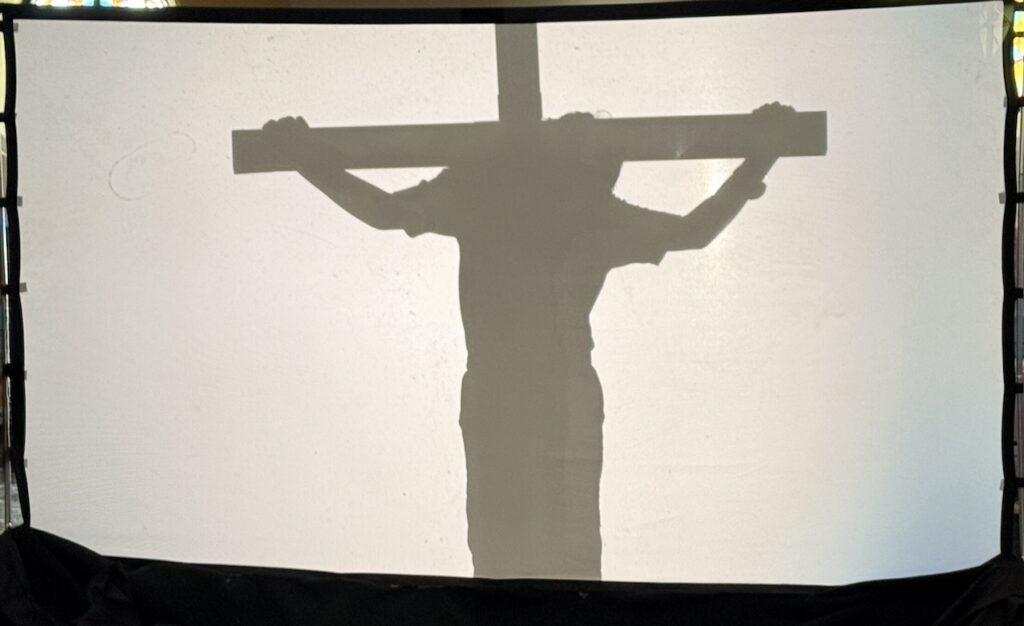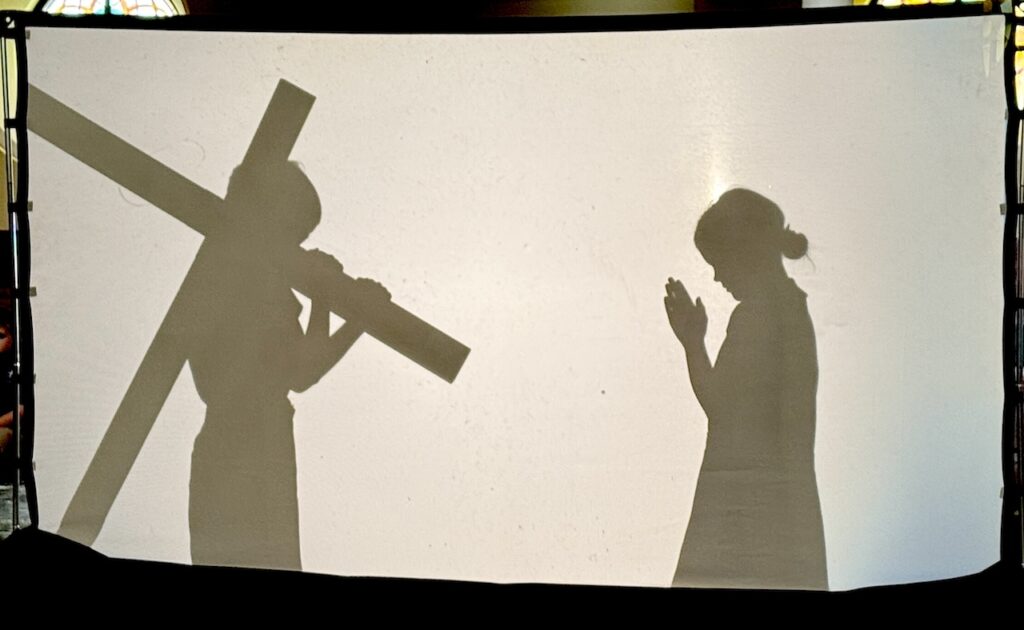They walked in silence and sat in darkness, the church illuminated only by a soft light dimly shining on the ambo. Hundreds waited patiently on April 4 as the fourth graders of St. Mary’s School, Richmond, took their places for the “Shadow Stations of the Cross,” a school tradition that is celebrating its 25th anniversary this year.
It started with a prayer. A young girl walked to the lectern, thanking Jesus and imploring his forgiveness as she said, “Help me to realize your infinite love for me, and help me to understand the great sacrifice you made for me and for all humanity.”
Suddenly, a flash of light directed everyone’s attention to a glowing projection screen. The shadows of students looked like dark statues frozen in time. A description of the First Station of the Cross was read. After Jesus was sentenced to death, the church was plunged into darkness again. Then, cantors began singing “Were You There When They Crucified My Lord.”
The audience was invited to join in, and the church was soon filled with the sorrowful sounds of the haunting hymn. Different students took their places for the Second Station. This was repeated until all 14 stations were complete.
The entire fourth grade class emerged and ended with a song, “The Commission” by contemporary Christian band Cain.
In 2000, then-fourth grade teacher Dona Wright saw pictures of a similar presentation in a newspaper. “I thought it was beautiful and I started to think of how we could do it,” she said. She and fellow teacher Paula Titus worked together to find readings and prayers suitable for children. Originally, the school used a white sheet and performed in the gym. Over time, the presentation evolved and moved to the church, though the same prayers and readings are still used.
“Fourth graders are in a unique stage of development where innocence and deeper thinking start to intersect,” said Susan Trout, current fourth grade teacher. “They are still innocent in their view of the world, but are also beginning to think deeply, ask more questions, and tackle complex ideas. This is also reflected in their faith and prayer.”

Trout explained that this event is a group effort involving multiple teachers. The 40-plus fourth grade students are divided into groups and work with Trout, music teacher Danielle Moretti, fourth grade teacher Kaleb Bloomfield, and librarian Lori Valdepeñas. The children practice for several weeks and also spend time during Lent learning about the importance of the Stations of the Cross.
“It helps to deepen the students’ faith,” said Valdepeñas, who spent a decade teaching fourth grade before becoming the librarian. “Being part of the Passion helps them better understand the story of Jesus’ death and resurrection.”
Middle school teacher Scott Schaefer shared that before eighth grade graduation, he asks students about their favorite memories of St. Mary’s, and they often point back to the Shadow Stations. Schaefer himself said this is his favorite event of the year. “The first time I saw it at night, it was extraordinarily powerful for me. The students are literally bringing the Word to life,” he said.
Though it’s only Kaleb Bloomfield’s first year teaching at St. Mary’s, the unique event has already made a big impact. “It’s a great reminder that no matter how young you are, you can be an ambassador of Christ,” he said.
St. Mary’s has been telling this 2,000-year-old story in the shadows for 25 years. Teachers said that even though the Stations never change, every year is different because students bring new voices, new poses, and new relationships with Jesus.
For Moretti, it’s all about the personal connections that students experience. “The story is not just in a book anymore. Those kids are literally holding that cross,” she explained.
“It really gives them a sense of a real world moment that Jesus experienced, which, in turn, humanizes him to them. He is less an idea and more of a person to them.”

